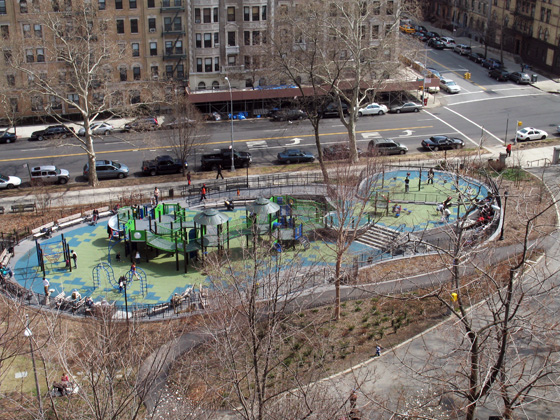
But what is more interesting in terms of architecture is how the playground was developed: It’s a really good example of both community involvement and responsive government. The new, complex playground is a drastic improvement over the grimy 70s play yard it replaced, but the process took nearly a decade. In 1999, the Friends of Morningside Park began surveying residents, including those with children and those that wanted children, about what they wanted. They took that information, developed a master plan to restore and improve Frederick Law Olmsted’s original design. Using this plan, the neighborhood worked with the City through long-term activism to eventually get it built.
The whole process took ten years and a lot of gentrification happened in that time, but it’s still a great reminder of what is possible if a community organizes to make their common environment a little better. I think, like any good urban space, the results speak for themselves, so do be sure to go up and see it when you’re up in New York or have a look at some of the pictures in the linked blogs.
Thanks so much for telling the story of the community process behind this design. Too often architectural critiques leave this critical element out. That’s not to take anything away from the designer of this playground – Alex Hart at the NYC Dept. of Parks and Recreation who brilliantly synthesized the community goals as embodied in the Friends of Morningside Park Master Plan with the site topography to develop a remarkable design that is respectful of the historic Olmsted and Vaux design of this park.
I agree, and that is why I wanted to talk about it. All too often, the architecture Thanks for you and your colleagues/predecessors’ hard work to get it built.
Too much activism in my area is concentrated on making parks ornamental, so it was great to see a neighborhood band together to make one more usable.